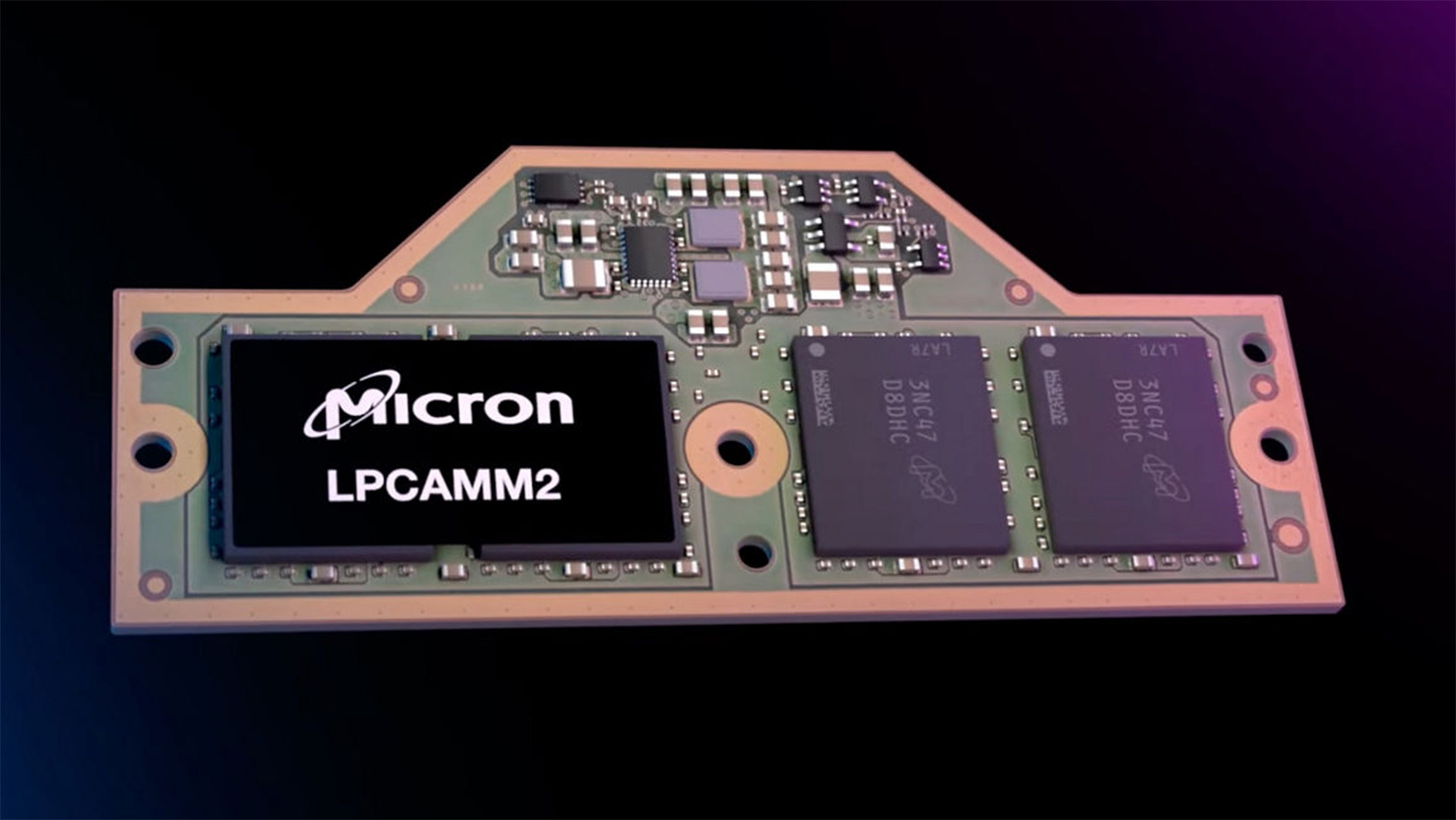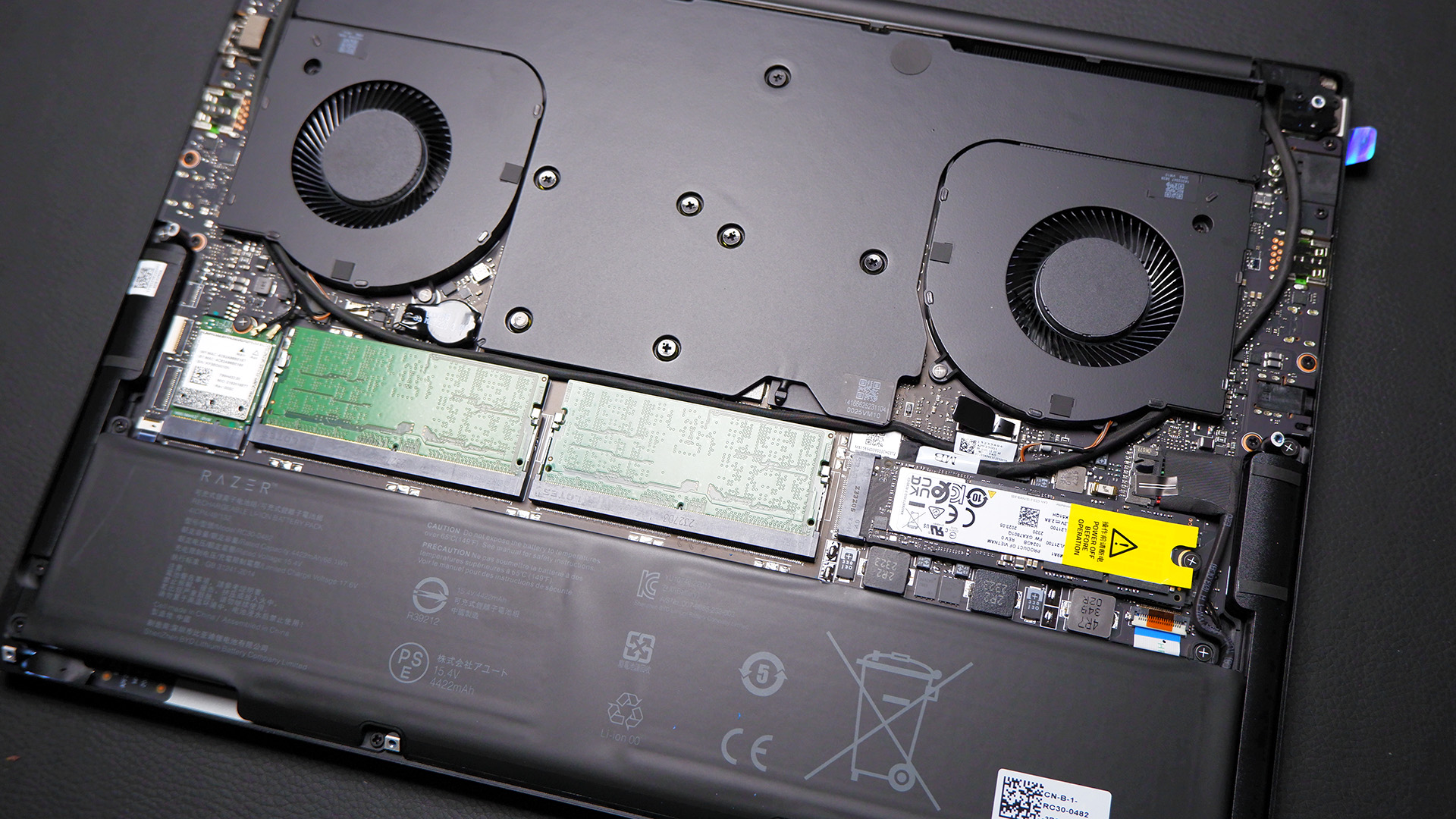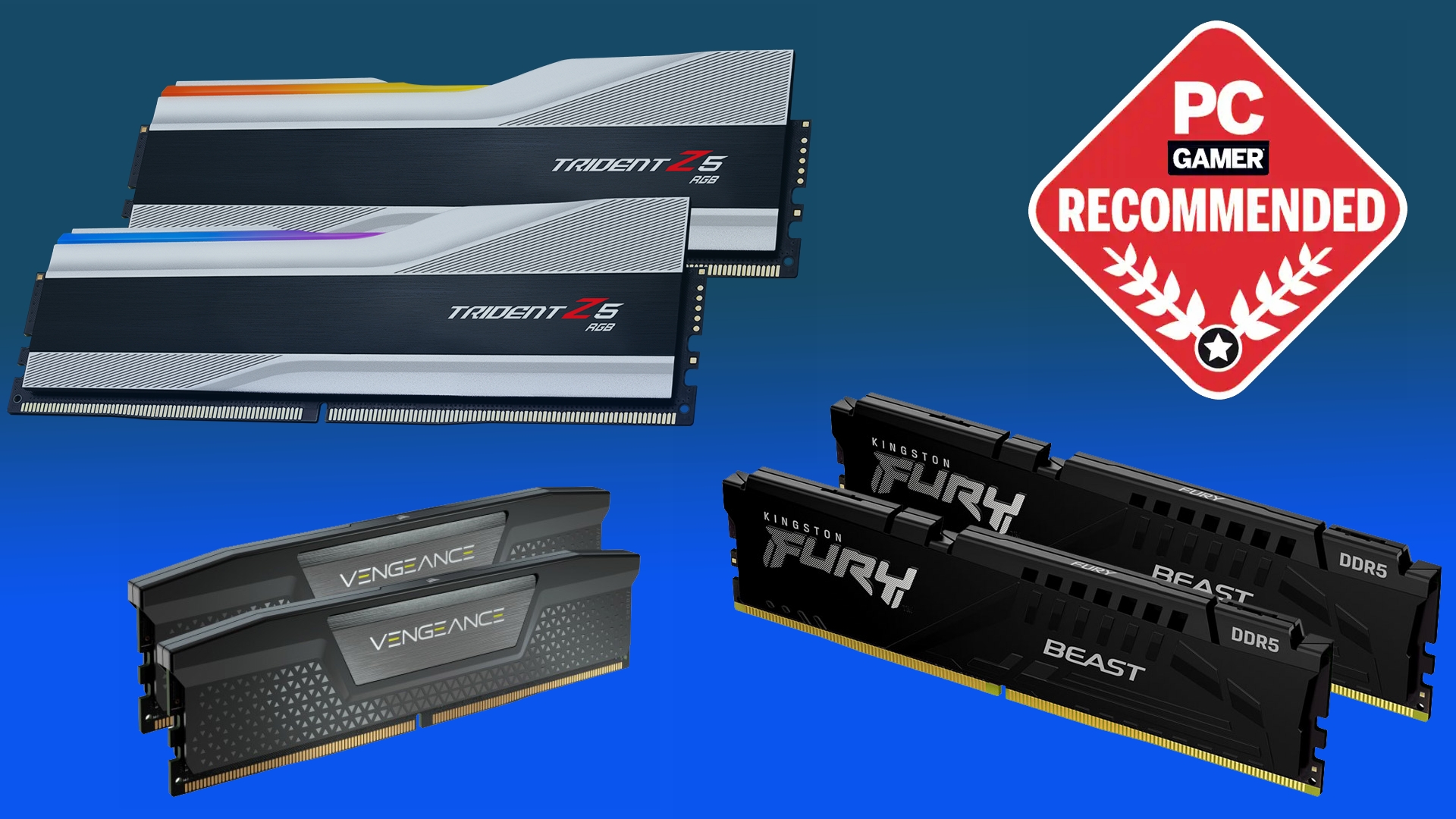
A new form of upgradeable laptop memory has been rolled out within a Lenovo ThinkPad laptop. This new memory format, LPCAMM2, offers upgradeability and efficiency in a compact form factor, which means it can be used more widely in laptops that might usually have non-replaceable, soldered memory inside them.
Micron is claiming the first LPCAMM2 memory modules on the market, available to buy separately for a reasonable sum of $330 from the Crucial website or dropped into the Lenovo ThinkPad P1 Gen 7 workstation laptop.
LPCAMM2 is the carrier for high-performance memory chips, in a set format that more laptops are expected to adopt with time. These first LPCAMM2 modules are fitted with LPDDR5X with speeds up to 7,500 MT/s.
Micron's LPCAMM2 modules will initially be available in 32GB and 64GB densities. That's going to be a generous amount of memory for any laptop, though we're unlikely to see it roll out in budget models any time soon. The addition of a new socket and redesigning motherboards for LPCAMM2 is likely to ramp up costs, though Micron remains convinced that LPCAMM2 could end up being the more affordable option for high-performance laptop memory in the long run.
Compared to SO-DIMMs, the more prominent memory form factor today, LPCAMM2 takes up less than half the space and requires only a single module while retaining dual-channel support. SO-DIMMs, on the other hand, require two for best performance.
LPCAMM2 is also very easy to remove and replace at home. Ifixit has released a step-by-step tutorial that shows the entire process, and anyone familiar with replacing an M.2 SSD should have no issues with this.
"With LPCAMM2, we are delivering a future-proof memory solution, enabling faster speeds and longer battery life to support demanding creative and AI workloads," Jonathan Weech, senior director of product marketing at Micron, says.

Gaming laptops traditionally use SO-DIMM memory, which is replaceable. By fitting SO-DIMM slots, manufacturers generally have to design larger, thicker laptops than office machines with soldered, non-replaceable memory. With LPCAMM2, it's possible to meet in the middle: a slimmer laptop with higher-performance memory that's upgradeable.
Take the Asus ROG Zephyrus G14 (2024). This is a compact 14-inch gaming laptop with a slim profile of only 1.63 cm at its thickest point, which means using soldered memory. By comparison, the Razer Blade 14 (2024), which uses SO-DIMM memory, is 2.2 cm thick. That's not exclusively to blame on the SO-DIMM sticks, but generally SO-DIMM results in much thicker designs than soldered memory.

Best RAM for gaming: the latest and greatest
With LPCAMM2 we may see slimmer designs from manufacturers hoping to land somewhere in the middle of the two. A svelte, yet upgradeable, gaming laptop with lots of speedy, dual-channel memory. However, it doesn't stop there.
High-performance laptops and desktops are also a part of the plans for the CAMM2 form factor. Instead of the LPDDR5X found in Micron's first LPCAMM2 modules here, these would likely use DDR5 chips instead and ditch the 'LP' prefix. The exact benefit of this approach versus traditional DIMMs is yet to be made abundantly clear, but JEDEC, the organisation that created the standard, says stackable modules could help boost capacities.
It's also theoretically easier to cool lots of horizontally mounted CAMM memory than a traditional DIMM.







